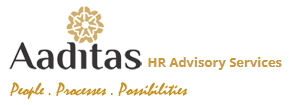



The workforce chart of any private sector employer in India currently comprises of permanent (full time) employees, contract staff and direct consultants. The largest pie happens to be of those employees who are hired on a full time and permanent basis. These employees are eligible for all the benefit schemes introduced by the employer. Their employment contracts are valid till the retirement age (generally 58 years) of the employees.
A large pool of flexible staff (contract staff) is engaged by companies to address the growing work load. These employees are engaged through a third party contractor and do not form a part of the company payroll and benefits. These employees are hired on a need base and this option works quite effectively to balance the company headcount and outsource non-core work simultaneously.
Permanent employees enter into an employment agreement with the employer which is a comprehensive document outlining all the relevant terms and conditions of employment. The employment agreement acts as a binding document for the employee and employer.
The working population in the private sector of India today is highly mobile. The ‘shelf life’ of an employee in a role on an average is seen 2-3 years. In the last few years it has been prominently observed that the movement is often even in the senior management league.
Candidates are getting choosy about their roles and often reject opportunities if all their expectations are not met. Candidates evaluate job opportunities on various parameters like fixed compensation, allowances, incentives, benefits, security and sustainability. The brand of the employer and company’s reputation in the market dictates some of the developments.
Volume based hiring could actually be an exhaustive exercise because it has been seen over the years that some employees turn down the job offers at the last moment as they would have secured a place with another corporate.
There is merit in knowing answers to the following questions:
To know the answers to these questions would mean the employer would need to run a checklist before the recruitment process begins. The answers to these questions also define the level of preparedness of the company.
As a market entry facilitating firm we had a unique experience where in one of our clients from the UK wasn’t sure about the location and was struggling to attract talent in India. Eventually, under the guidance of our recruitment arm, the location was decided and we partnered the organization in their search process entirely. Constant advice was provided on the benefits and recruitment ‘Do’s’ and ‘Don’ts’.
It’s imperative to understand the general mentality of Indian employees and their expectations from a job. An employee could be looking at various factors including a better pay package, a fancy designation, security or just substantial benefits.
It is a proven fact that employers who offer better employee benefits are able to attract talent consistently. It is good to periodically publish the best practices at your work place. Such activities create awareness and a surge is seen in applications. This could be done through newspapers advert, PR activity or marking a presence at job fairs.
Job fairs prove to be an effective platform for branding and are a readymade reservoir to access talent. In addition to the traditional tools like jobsite search and referral schemes, social networking sites are proving to be equally effective for sourcing and connecting with candidates. Simply, a page on Facebook would attract resumes to your recruiter’s inbox.
Culturally, employees in India are sensitive towards the social image of their employer. They demonstrate pride in sharing their best practices at social gatherings and speak high about their company. An apt and lucrative job title sometimes ends up reaching out to adept talent before you commence your recruitment process.
Let your talent acquisition process be a blend of your search through your professional network, reputed market entry facilitators, recruitment firms and online applications. Do evaluate an option of campus hiring. That gives an organization a good exposure and strong foothold into the education institutes within India. Consider the following points:
Given the efforts and time invested by organizations to attract and engage talent, it is critical to best manage and retain the talent in the larger interest of the organization. Good amount of time is invested in engaging employees and allowing them to reach the expected level of productivity and deliver results. Good talent management practices and employee relations endeavor helps to retain this talent.
An effective employee relations activity is the need of the hour. Regular engagement with the employees, feedback sessions, recognition exercise, team-bonding assignments make a significant impact on the organization’s culture and performance. HR managers need to be empathetic towards employees’ concerns and must promote a culture which strengthens the belief of employees in company’s values and reassures their faith in the company’s ability to demonstrate sustainable growth.
Good and progressive companies always run a risk of employee solicitation from competitors. Appropriate employee engagement and innovation strategies would reduce the risk. If employees’ career progression is planned well and they get adequate opportunities and apt forums within the organization to prove their mettle, a high growth atmosphere will be fostered. Motivated and committed employees choose to stay for a longer time in the system, even when the company goes through challenging times! Indian Bank story in India is an absolute illustration of this fact.
Constructive relations (IR in a factory) with the employees and regular dialogues would ease out potential tensions and maintain harmony between the employer and employees. Unscrupulous attitude towards employees especially, when the company has a registered union, may lead to unpleasant events.
The latest event of employee unrest at the manufacturing plant of India’s largest car maker is a classic example of poorly managed IR/labour relations. IR courses failed to appear in the curriculum of elite B schools in India post- liberalization, albeit, after the fateful event at Manesar, in the north of India at the giant car manufacturer’s site, the courses are being reintroduced. Large amount of emphasis is given on IR discussions and workforce stress management content. Ineffective ER/IR or talent management leads either to mass exodus, reputation damage of the organization or unpleasant events.
Having said that, we also advise our clients regularly to have robust ER policies around Discipline, Grievance and Dignity at work. Such policies are pivotal when the organization has to deal with issues around the above three topics. In case, an employee has to be terminated on disciplinary grounds like gross misconduct, the company must be able to establish the facts that this was done in all fairness and they followed the ‘principles of natural justice’ and ‘fair play’.
In order to enable employees at workmen[i] level to cope with rising inflation, the Indian employment law framework and constitution introduced The Minimum Wages Act almost 5 decades ago.
The enforcement of this act ensures that workers get periodic wage hikes and thus their living standards remain unaffected. For the senior level workforce (managers/supervisors), management staff, highly skilled professionals (IT/Pharmaceutical ones), there is no specific law on wage revision. In absence of such a provision, the increment policies of the company play a crucial role.
A company must have a fair performance management and reward process. Generally, most of the organizations offer an annual salary increment to employees in India which ranges between 8-20%. Some progressive organizations offer increments twice in a year, as well! These are considered to be best practices as they are in sync with the spirit of the law for workmen.
Exceptional performance must be rewarded well. These are motivation activities and definitely reflect positively on the company’s growth. A good reward policy certainly attracts good talent and fosters talent retention. It is advisable that companies should design performance based incentive schemes. Such schemes not only help employees to go that ‘extra mile’ and deliver high standards of performance, but they also appropriately reward the effort behind the outstanding performance.
India has one of the most complex matrices of employment laws and statutory labor compliance. There are acts under central and state government but there are also locally applicable laws like ‘The Shops and Commercial Establishments Act’. Some of the laws are obsolete and may also seem irrelevant in today’s changing professional scenarios. Even so, they are enforced and a company’s compliance to these laws is often checked by the concerned authorities. It is most often seen in India that progressive and multinational organizations would have some finest policies and employment infrastructure, albeit their adherence to the statutes is either weak or insufficient and they end up getting summoned by various labor courts. This could be either due to ignorance, lack of knowledge of the machinery or ineffective guidance by consultants. This makes it a crucial requirement to engage professional, competent and learned labor law consultants.
It is essential to adhere to all applicable employment laws and statutory compliance in India. This would never deprive employees from their rights and thus would retain the talent of the company.
The landscape of HR matters in India is wide, albeit understanding the aforementioned areas would ensure a good start for the new international organization in India, ultimately achieving sustainable growth!